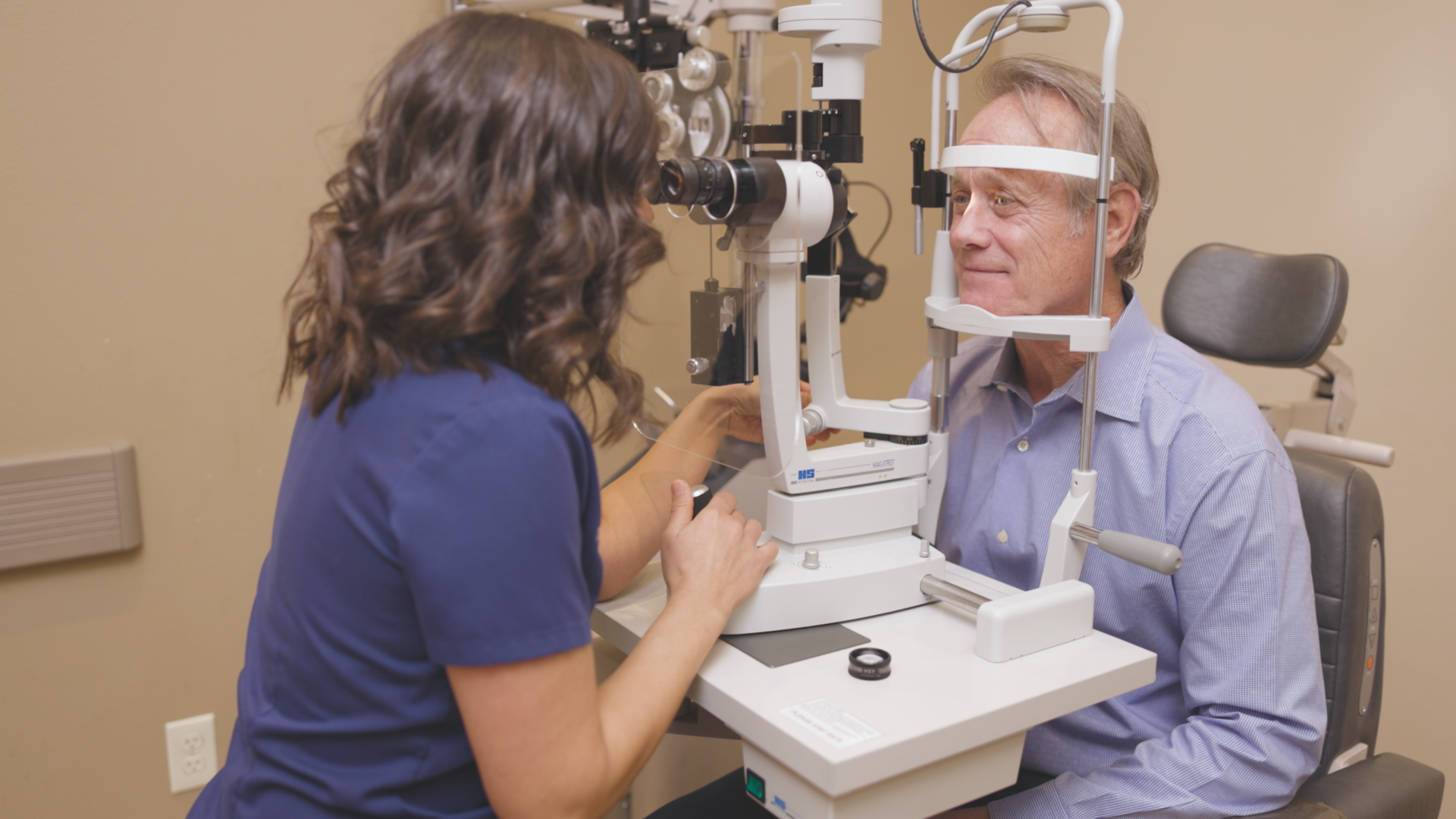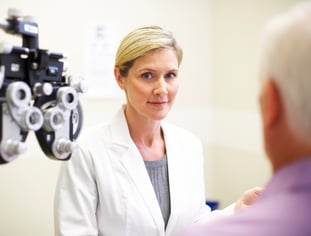Just How an Eye Doctor Can Help Prevent Vision Complications in Chino
Just How an Eye Doctor Can Help Prevent Vision Complications in Chino
Blog Article
Checking Out the current Technological Improvements in Optometry and What They Mean for Optometrists
In the ever-evolving area of optometry, recent technical advancements are improving exactly how practitioners come close to eye treatment. From the accuracy of Optical Comprehensibility Tomography to the nuanced insights offered by AI-driven diagnostic devices, these innovations are establishing brand-new requirements in client assessment and therapy. Teleoptometry is positioned to redefine access, making sure that knowledge transcends geographical restrictions. As these innovations penetrate the practice, optometrists are faced with the challenge of welcoming these tools to boost person outcomes. The question stays: exactly how will these technological shifts redefine the duties and responsibilities within the career?
Developments in Diagnostic Tools
Progressing the area of optometry, developments in analysis devices have changed the way eye treatment experts analyze and identify ocular problems and aesthetic impairments. The previous decade has actually observed significant technological innovations, making it possible for more accurate and comprehensive examinations.
One more secret development is the intro of innovative corneal topography systems, which map the surface curvature of the cornea with precision. These tools are particularly useful for suitable call lenses and identifying corneal conditions. Electronic retinal imaging has actually changed standard ophthalmoscopy, supplying thorough, panoramic sights of the retina that help with thorough aesthetic evaluations.
The advancement of wavefront aberrometry has actually likewise been vital, allowing the evaluation of refractive errors with unmatched precision (Eye Doctor). This innovation assists in tailoring corrective lenses and enhancing medical end results for refractive surgical treatments. Jointly, these diagnostic developments empower optometrists to deliver exceptional individual treatment, ensuring early intervention and customized therapy techniques, eventually improving aesthetic wellness end results
AI in Individual Administration
Building on the foundation of sophisticated analysis tools, the unification of artificial knowledge (AI) in person administration stands for a transformative leap for optometry. AI systems are significantly employed to improve effectiveness, precision, and customization in person treatment.
Moreover, AI-driven systems promote streamlined person interactions and management processes. Automated scheduling, online consultations, and customized follow-up plans not just improve client complete satisfaction yet also optimize time monitoring for practitioners. These systems can triage clients based upon the urgency of their conditions, ensuring that those in vital demand receive timely focus.
Furthermore, AI boosts decision-making by offering optometrists with evidence-based suggestions and therapy paths. By integrating information from digital health and wellness documents, AI devices offer understandings that notify clinical choices, minimizing the threat of mistakes and boosting client results. As AI remains to progress, its function in individual administration will likely increase, improving the landscape of optometric care.
Advances in Retinal Imaging
In the realm of optometry, retinal imaging has actually experienced amazing technological developments that are enhancing diagnostic abilities and person treatment. Technologies such as Optical Coherence Tomography (OCT) and fundus photography have actually revolutionized exactly how eye doctors examine the retina and imagine.
Improved imaging techniques like OCT angiography are further refining analysis precision. This non-invasive technique maps blood circulation in the retina, offering crucial insights right into vascular health and wellness without the requirement for color injections. Additionally, adaptive optics modern technology is being integrated right into retinal imaging systems to deal with ocular aberrations, delivering unprecedented image quality. Such improvements assist in the recognition of minute retinal changes that can represent condition development.
Furthermore, improvements in fabricated knowledge are enhancing retinal imaging by allowing automated evaluation of huge datasets. These systems aid eye doctors in identifying patterns a measure of pathology, therefore enhancing diagnostic accuracy and performance. Collectively, these advancements are changing retinal imaging into a keystone of modern-day eye treatment, boosting results and increasing healing possibilities.
Teleoptometry's Expanding Role
Teleoptometry is increasingly becoming a crucial part of eye care, driven by developments in electronic interaction and diagnostic tools. As optometry accepts electronic transformation, teleoptometry helps with remote appointments, enabling eye doctors to prolong their services beyond typical borders. This is specifically beneficial in country and underserved locations where access blog here to specialized eye care is commonly minimal. By leveraging high-resolution video conferencing and progressed retinal imaging, eye doctors can conduct thorough eye tests from afar, making sure prompt medical diagnosis and therapy.
The combination of artificial intelligence (AI) further improves teleoptometry, making it possible for the evaluation of visual data and helping in the discovery of ocular problems such as glaucoma and diabetic retinopathy. AI-powered algorithms can quickly translate complicated imaging data, offering eye doctors with beneficial understandings that bolster professional decision-making.
In addition, teleoptometry sustains connection of care with seamless combination with electronic health documents (EHRs), permitting eye doctors to keep detailed person histories. When consulting with different specialists., this guarantees that Read Full Article individuals get regular and tailored treatment also.
Regardless of these benefits, challenges remain, consisting of making certain data security and handling patient expectations. Nonetheless, teleoptometry represents a substantial stride in the direction of even more obtainable, reliable, and patient-centered eye treatment. As technology develops, its function is poised to expand better.

Future Fads in Eye Treatment
A myriad of innovative patterns is readied to reshape the future of eye care, driven by technical improvements and the progressing demands of people. One significant pattern is the assimilation of fabricated knowledge (AI) in diagnostics, which promises to boost the precision and efficiency of eye assessments. AI formulas can assess huge amounts of data from retinal pictures, potentially detecting problems like diabetic retinopathy and glaucoma earlier than standard methods.
In addition, customized medication is gaining traction in optometry, with genetic screening educating customized treatment strategies. This method aims to maximize client results by customizing interventions to private genetic accounts. Wearable modern technology, such as wise get in touch with lenses, is also imminent, using real-time tracking of intraocular pressure or sugar degrees, therefore offering continuous understandings into systemic and eye health and wellness.
The fostering of enhanced fact (AR) and online fact (VR) in training and person education and learning is another emerging fad. These modern technologies use immersive experiences that can improve understanding and skills both for eye doctors and patients. As these trends evolve, optometrists have to stay abreast of technological improvements to supply cutting-edge care, guaranteeing better person end results and fulfillment in the dynamic landscape of eye care.
Conclusion

Jointly, these analysis innovations encourage optometrists to supply superior person treatment, ensuring very early intervention and customized treatment approaches, eventually improving aesthetic health and wellness outcomes.

As these modern technologies continue to advance, eye doctors have to adjust and include them into practice, eventually maximizing process performance and boosting the requirement of eye care supplied to people.
Report this page